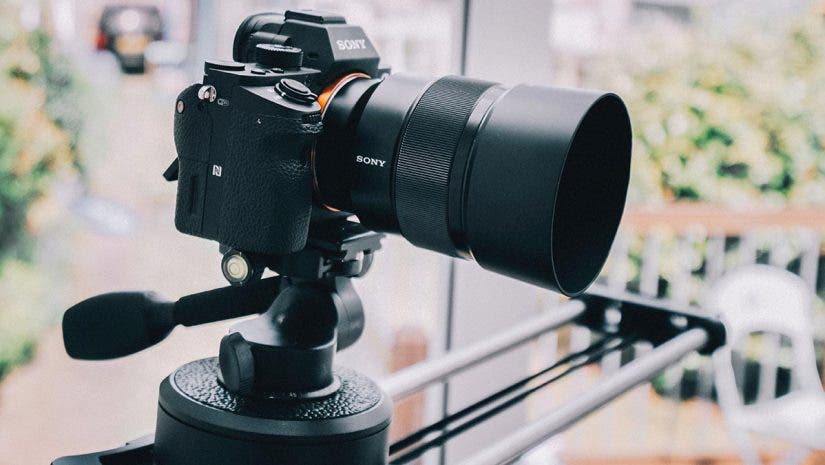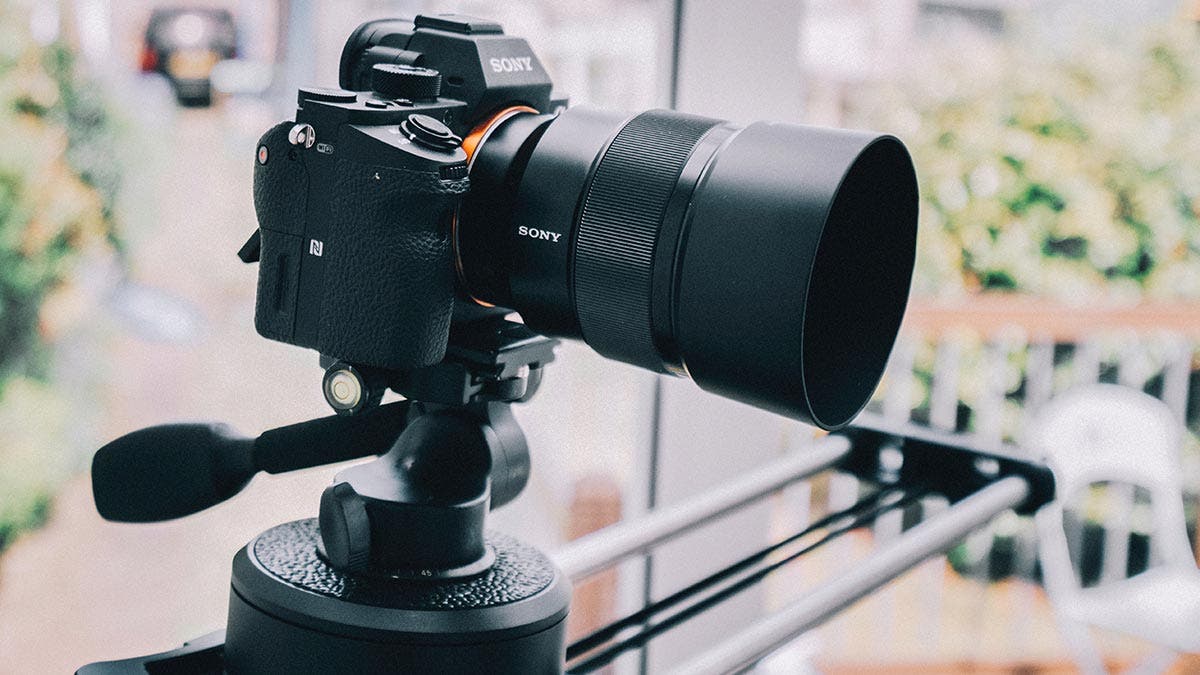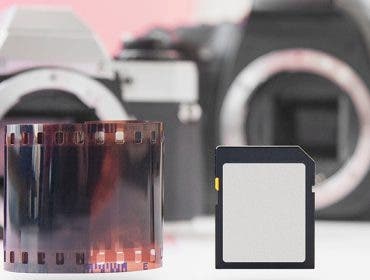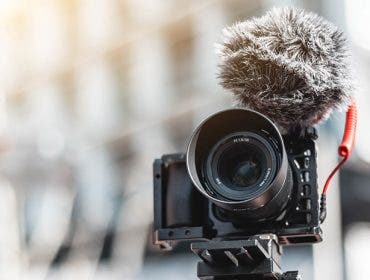With camera brands developing more advanced mirrorless cameras that are ranking even closer with high-end DSLR cameras, a rising number of photography enthusiasts have been choosing mirrorless systems. More recently, even aspiring videographers have been turning to these lightweight yet powerful imaging systems for their recreational and professional filmmaking needs.
What’s not to love? Aside from being much smaller and more lightweight due to the absence of an internal mirror, there are now a couple of notable mirrorless cameras that offer many of the same features that the best DSLRs for video have — including advanced autofocus and exposure performance, and the use of interchangeable lenses.
So if mirrorless cameras are your pick for creating rich video content, check out our shortlist of the best mirrorless systems for video recording.
What is a Mirrorless Video Camera?
A mirrorless video camera is a camera that lets the light travel directly to the sensor without using a reflex mirror. As a result, you can preview the image in real-time on an electronic viewfinder (an LCD screen) and adjust focus, exposure, and framing.
Because there is no reflex mirror, mirrorless video cameras are more silent, and faster at acquiring autofocus. Because they can use phase-detection focus sensors, you get less time with out-of-focus recordings. When it comes to mirrorless vs DSLR, there are major advantages to mirrorless cameras. Mirrorless video cameras are lighter and more compact, making them easier to carry around and handheld for long periods. Some of the mirrorless cameras can even mount on drones.
Mirrorless vs DSLR: What’s the Difference?
The primary difference between mirrorless and DSLR cameras is the presence of a mirror.
When digital photography first came on the scene, DSLRs were the only option. Today, mirrorless cameras are rapidly taking over a larger percentage of the digital photography and videography market.
What Does a DSLR’s Mirror Do?
When you look through the DSLR’s viewfinder, you can see the frame as it will be exposed, thanks to the mirror inside the camera. When you depress the shutter, the mirror flips up to expose the sensor.
In videography, the mirror is not only useless, but it’s in the way. You can’t physically see through the viewfinder when the sensor is exposed and you’re recording. Instead, your DSLR goes into Live View Mode.
Why Mirrorless Makes More Sense for Video
Mirrorless cameras are designed around the Live View Mode experience. Using either the electronic viewfinder or the screen on the back of your camera, you can preview your footage exactly as it’s being recorded, which means less guess work.
Because mirrorless cameras are so popular, most manufacturers are introducing new and exciting features into their mirrorless models first. By selecting mirrorless for video, you get access to better focusing systems, newer technology in lenses, and 6K and 8K resolution.

Whether you’re a beginner videographer or a serious enthusiast, we’re sure you’ll find a mirrorless system that will suit your budget and video recording requirements in our list.
Panasonic Lumix GH6
The new Lumix GH6 is one of the best mirrorless cameras for video thanks to its 5-axis gyro sensor and algorithms that improve handheld shooting. In addition, it is lightweight and compact, easy to use, and resistant to dust, splash, and freeze.
The camera has a 25.2MP live MOS sensor without a low-pass filter and provides a wide dynamic range (12+ stops of wide dynamic range for V-Log recording and up to 13+ stops using the dynamic range boost). Furthermore, Panasonic has optimized heat dissipation on this new model, which allows you to record unlimited videos in C4K 60p 4:2:2 10-bit.
The GH6 features high-precision 2D and 3D noise reduction, detail processing, high precision focusing, camera moving compensation, and video assist functions (e.g., Waveform Monitor, Zebra Pattern, Luminance Spot Meter, Frame Marker, Anamorphic Desqueeze Display, etc.). You can see the footage in real-time on the GH6’s monitor, which has a 1,840K-dot high resolution and touch control.
See the camera in action in this Lumix GH6 hands-on review with filmmaker Rob Adams.
Key Specifications:
- 25.2MP Micro Four Thirds Digital Live Sensor
- 4K 120p HFR / FHD maximum 300fps VFR Video Recording
- ISO Sensitivity Range of 100-25600
- 12+ stops of wide dynamic range for V-Log Recording
- 3″ Tilt free-angle Monitor
- Weighs 739g (26 oz)
Why is this a great camera for video recording?
This camera has all the bells and whistles of a much more expensive cinecamera but at a much more affordable price. The impressive image stabilization features really stand out and make it possible to shoot handheld in 4K resolution without spending hours on shake correction in post production. You’ll love the selection of affordable cine lenses, too.
OM SYSTEM OM-1
The OM-1 focuses on focus. The camera is packed with image stabilization, Artificial Intelligence (AI) algorithms for object detection (birds, trains, planes, cars, cats, and dogs), and 1,053 points of autofocus. Alongside full video capabilities (4K 60p up to 4:2:2 10bit and no time limit on recordings), OM-1 also features the TruePic X processor that allows photographers to capture still images with 120fps.
The new mirrorless camera from Olympus is an all-in-one professional camera designed for sports, wildlife, and travel photographers and videographers. It is resistant to splash and dust and works even in -10 Degree C temperatures. Moreover, it is lighter and smaller (5.3 x 3.6 x 2.8″ (13.48 x 9.16 x 7.27cm)) than other models. The viewfinder is weather-sealed too and offers a 5.76 million dot OLED display with a 120fps refresh rate.
Check out our first look of the OM-1 with photographer Gavin Hoey.
Key Specifications:
- 20MP Stacked BSI Micro Four Thirds Digital Live MOS Sensor
- C4K (4096×2160) Video Recording at 30p
- 1,053 points subject-detect AF
- Electronic Viewfinder 5.76M dots OLED Display
- Weights 511g (18 oz)
Why is this a great camera for video recording?
Olympus may not get as much attention as other camera companies, but they have a very loyal customer base for good reason. Olympus’s attention to detail and user experience shine on this model. It has all the competitive video specifications you want in a package that’s comfortable, reliable, and easy to use.
Canon EOS R5 C
Canon is definitely a manufacturer to watch when looking for the best mirrorless camera for video. The new EOS R5 C model benefits from all the advantages of previous models and aims to be the perfect camera for all types of creators. It has a generous 45MP CMOS sensor that provides exquisite image quality, whether for large prints or 8K videos. In addition, EOS R5 C supports HDR recording and High Frame Rate recording up to 120p and 4K.
The new Canon model uses the Dual Pixel CMOS AF technology and offers high precision focusing, human detection with deep learning technology, and a variety of AF modes. It also has an impressive dynamic range with an ISO range of 100-51200, expanded for still images up to 102400.
Another novelty of the EOS R5 C is the built-in cooling fan that allows continuously recording high-definition 8K/60P video. Canon also considered usability and included 13 assignable buttons to let you customize the design.
Key Specifications:
- 45MP 35mm Full-frame CMOS Sensor
- 8K (4096×2160) RAW or Cinema RAW Light Recording at 60p
- 1,053 Automatic AF zones with Eye, Face and Head Detection AF
- ISO Sensitivity Range of 100-51200 (Extended: 102400 for still images)
- Mechanical and Electronic Shutter
- 3.2″ TFT color, LCD Monitor
- Weights 680g (1.5 lbs)
Why is this a great camera for video recording?
At a time when shooting 4K video is standard and shooting in 8K sets you apart from the competition, it’s important to choose a video camera that achieves high resolution reliably and without overheating. Canon’s internal cooling system lets you shoot in 8K for prolonged periods worry free.
Sony Alpha 1
Sony is a top competitor for the best mirrorless camera for video, and the competition goes even between Sony camera models. The Sony Alpha 1 aims to deliver high-resolution and high-speed performance never reached before. It features a generous 50.1MP full-frame sensor and an upgraded BIONZ XR imaging processing engine. As a result, the Alpha 1 is capable of continuous 8K 30p 10-bit 4:2:0, 4K 120p 10-bit 4:2:2, and S-Cinetone color video recording.
Sony’s new model might be the best Sony mirrorless camera for video based on its 3.5x faster wireless FTP transfer speed, continuous shooting up to 30 full-frame images per second, a silent electronic shutter with full autofocus and auto exposure, and wide dynamic range with an ISO range of ISO 100–32000, expandable to ISO 50–102400. In addition, Alpha 1 doesn’t forget about image stabilization and includes gyro sensors and stabilization algorithms.
Check out the hands-on review of the Sony Alpha 1 with Mahesh Thapa for more details.
Key Specifications:
- 50.1MP (8640 x 5760) Full-frame Stacked Exmor RS Sensor
- 8K (4096×2160) Video Recording at 30p
- ISO Sensitivity Range of 100-32000 (Extended: 50–102400)
- Mechanical and Electronic Shutter
- 3″ Tilting Touchscreen LCD Monitor
- Weights 737g (1.6 lbs)
Why is this a great camera for video recording?
There’s plenty to love about the Alpha 1 for videography, but even with the most sophisticated cameras, your shots are only as good as the sharpness of your focus. The Alpha 1’s focal-plane phase detection AF system is bound to impress. From reliable subject tracking to AF points covering 92% of the frame, you’ll never miss focus again.
Sony Alpha a7R IV
Another candidate for the best Sony mirrorless camera for video title, the Sony a7R IV incorporates a 62.5MP full-frame sensor into a compact body. Loved by wildlife photographers and videographers, Alpha a7R IV has a vibration-free shutter, a high 10fps shooting speed, AF algorithms for high performance in low lighting conditions, and a buffer memory that allows you a burst of 68 images. In addition, the camera uses Fast Hybrid AF to give you high-speed precision autofocus and tracking performance while shooting video.
With Alpha a7R IV, you also get 5-axis in-body image stabilization, white balance control designed for everything from daylight to underwater conditions, and a long-lasting Z-series battery. Sony has improved the design too, making the new model more comfortable and user-friendly. The magnesium alloy body is dust and moisture resistant. It is a camera that will stay with you for years.
See our hands-on review of the Sony a7R IV with Mahesh Thapa to view the camera’s performance on a trip to Iceland.
Key Specifications:
- 62.5MP Full-frame CMOS Sensor
- UHD 4K (3840 x 2160) Video Recording at 30p
- ISO Sensitivity Range of 100 to 32000 (Extended: 50 to 102400)
- 5-axis in-body image stabilization
- Enhanced BIONZ X image processing engine
- 567 phase-detection / 425 contrast AF points with Real-time Tracking and Real-time Eye AF for human, animal, and movie
- 3″ 2.35 million-dot Tilting Touchscreen LCD Monitor
- Weights 665g (1.46 lbs)
Why is this a great camera for video recording?
When you want access to Sony’s leading technology but the Alpha 1 is a bit beyond your budget, the a7R IV is a wise choice for videography. Between the high-resolution capabilities, access to a range of fabulous cine lenses, and a recently upgraded rear-view screen, the a7R IV offers a fantastic user experience for video recording.
Blackmagic Design Pocket Cinema Camera 6K Pro
If you are looking for a small mirrorless video camera, this pocket-size model from Blackmagic may be what you need. The Blackmagic Pocket Cinema Camera 6K Pro is made from carbon fiber polycarbonate composite and measures only 7.08 x 4.41 x 4.84″ (17.98 x 11.20 x 12.3cm). The camera has a multipurpose handgrip, keeping all important controls at hand.
Blackmagic Pocket Cinema Camera 6K has a large sensor (6144 x 3456 Super 35) and EF lens mount for high-quality images and creative photographic effects. It also has built-in ND filters, 13+ stops of dynamic range, a 12-bit gamma curve for accurate colors, and a 5″ HDR display with 1500 nits of brightness to preview your work even in bright sunlight.
Blackmagic Pocket Cinema Camera 6K comes with a full version of Blackmagic DaVinci Resolve for editing your video footage. Check out a hands-on review of the Blackmagic 6K Pro with Vince Rappa for more info.
Key Specifications:
- Super 35 Sensor
- 6K (6144 x 3456) Video Recording at 60fps
- Up to 60 Minutes of Video Recording 6K RAW at 24 fps
- 13 stops of dynamic range with dual native ISO up to 25,600
- Built-in 2, 4, and 6 stop ND Filters
- 5″ 1920 x 1080 Adjustable Tilt HDR LCD Touchscreen Monitor
- Weights 1.24kg (2.73 lbs)
Why is this a great camera for video recording?
While other cameras divide their focus between still images and video, the Blackmagic Pocket Cinema Camera 6K is designed specifically for video. Every feature exists solely to improve your footage and recording experience. Between the built-in ND filters for better creative control and the ability to use pro-grade accessories and audio gear, this camera will elevate your video capabilities.
Fujifilm X-T4
If you’re following highly-reviewed cameras, you shouldn’t miss the chance to discover the X-T4, which is a popular choice of mirrorless camera for several photography niches. Fortunately for current users of the X-T4, it also has wonderful video recording features.
Fujifilm packed the XT-4 with multiple video-friendly specs to let you shoot professional high-quality footage. The camera is capable of capturing DCI 4K/60p and in full HD at 240fps. With low-light subject tracking and f-log format in 10-bit color, you’ll get in-focus and dynamic images.
Key Specifications:
- 26.1-megapixel CMOS 4 sensor
- Quad-Core X Processor 4
- ISO range 160-12,800
- Video in DCI 4K/60p
- Records F-log footage in 10-bit color
- Slow motion in Full HD at 240p
Why is this a great camera for video recording?
If you’re newer to recording video and prefer to learn by doing, the X-T4 is an easy and convenient camera to learn with because it quickly switches between video and still-shooting settings. You can capture quality content without digging through multi-page menus, and your footage will look excellent right out of the camera.
Sony Alpha a7S III
If you’re a Sony loyalist who’s looking for top-of-the-line image quality in a smaller form factor, you’ll love the a7S III. Unveiled in the summer of 2020, this camera can can shoot 120p 4K 10-bit 4:2:2 video, plus has RAW recording up to 60p 4K (16-bit) via HDMI. Pair it with its 5-axis in-camera image stabilization technology and you get sharper footage even when you’re shooting handheld.
But what makes it really stand out, aside from the fact that it hails from a premium line of Sony Alpha mirrorless systems, is that this full-frame mirrorless camera is designed to provide optimum low light performance. It also has dual card slots for even added recording options. To see it in action, check out this Sony a7S III hands-on review by Sony Artisan Taylor Rees.
Key Specifications:
- 12.1MP Full-Frame Exmor CMOS Sensor
- ISO sensitivity of 80-102,400
- 120p 4K 10-bit 4:2:2; Plus: RAW recording up to 60p 4K (16-bit) via HDMI
- 759 points (phase-detection AF)
- Weighs 614g (1.34 lbs)
Why is this a great camera for video recording?
The a7S III is making a name for itself among videographers for its ultra-fast autofocusing, impressive dynamic range, and unparalleled low-light performance. If you want a mirrorless camera capable of shooting beautiful video footage in just about any lighting condition, this is the model for you.
Sony Alpha a6600
This mirrorless camera from Sony features a few of the same pro-level specs in the a7 series, such as the 5-axis image stabilization. But thanks to the smaller APS-C sensor size, it bears a much lower price point. Shooting 4K video is still a breeze and its 24.2-megapixel resolution allows you to use it as a versatile tool for both photography and videography.
Despite not having a full frame sensor, it boasts of a highly reliable AF system, which is made up of 425 phase detection points. So if you’re an aspiring or professional videographer looking for a great second camera, the a6600 tops several lists of the best mirrorless for video.
Key Specifications:
- 24.2 MP Exmor CMOS image sensor
- Latest BIONZ X image processor
- 4K 30fps movies with improved AF speed and stability
- 5-axis in-body optical image stabilization
- ISO Sensitivity Range of 100-32000
- 3.0-type 921K-dot LCD monitor
Why is this a great camera for video recording?
The Sony Alpha a6600 is a solid choice for video content creators on the go. Compact, ultra-functional, and boasting an impressive battery life with the high-capacity Z battery, this small camera easily stands up to much larger full-frame competitors. Whether you’re shooting vacation videos or making your first independent film, the a6600 won’t disappoint.
Canon EOS R5
This is the camera Canon mirrorless users have been waiting for. Packed with video features including 8K RAW and 4K up to 120fps, it’s made for the modern content creator.
It has a new 45-megapixel full-frame CMOS sensor and the DIGIC X Image Processor, brining unprecedented detail to your images and footage. Plus, autofocus improvements with both head and eye detection and animal detection keep your subjects tracked even in the toughest lighting conditions.
Check out the Canon EOS R5 in this hands-on review with Lindsay Adler.
Key Specifications:
- 45MP Full-Frame CMOS Sensor
- DIGIC X Image Processor
- 8K RAW, 4K up to 120fps, 10-bit 4:2:2 With Canon Log or HDR PQ
- Head and Eye Detection and Animal Detection (first for a Canon mirrorless camera)
- ISO range of 100-51200; Expandable to 102400
- Dual card slots for CFexpress & UHS-II SD
Why is this a great camera for video recording?
When it comes to creating content, workflow simplicity is key. The Canon EOS R5 is a straightforward, easy-to-use camera that sets you up for success no matter what type of video you record. The unique customizable multi-controller button saves time so you can access the features you use most without sifting through menus.
Blackmagic Design Pocket 4K Cinema Camera
This pocket-sized camera boasts a few Blackmagic Design key characteristics, including a stylish and sleek design. Created to be a more beginner-friendly yet super powerful and portable version of their monstrous video camera systems, the BMPCC 4K camera is perhaps the most dedicated system for video on this list.
Record your videos as HD ProRes (422) for some entry-level film quality material and work until your SD card is fully loaded. This means continuous shooting is permitted — more than two hours of cinematic Blackmagic RAW 4K footage when you use a 256GB SD UHS-II card. It may not be the fastest and most advanced out there, but it’s definitely one of the best options on this list for serious filmmakers.
Key Specifications:
- 8MP Micro Four Thirds Super 16 Sensor
- DCI 4K (4096×2160) Video Recording at 60fps
- Unlimited Video Recording to SD Card
- Dual Native ISO up to 25600
- 5” 1080p Capacitive Touch Screen LCD
- Weighs 680g (24 oz)
Why is this a great camera for video recording?
If you use professional video accessories, you’ll need a camera that integrates seamlessly. The Blackmagic Pocket 4K Cinema Camera has a mini XLR connection for pro-level audio, as well as a full-size HDMI port for using external monitors and capture devices. Add in its unparalleled dynamic range and post-production flexibility, and this camera is a real crowd pleaser.
Nikon Z 6II
Nikon has equipped the new Z 6II mirrorless camera with 24.4 megapixels and two EXPEED 6 processing engines to help power your creativity. With 4K UHD 60p video using full pixel readout, and even the ability to create a 4K time-lapse movie, you’ll have creative filming options right at your fingertips.
Enjoy the camera’s low-light capabilities and wireless connectivity to your smartphone and laptop. Add in the compatible vertical battery grip and you have even more options for creating the exact films you want.
Key Specifications:
- 24.5MP BSI resolution
- Two EXPEED 6 processing engines
- 4K Ultra HD video at 60p
- 20 Creative Picture Controls
- Dual card slots (CFexpress/XQD and UHS-II SD)
Why is this a great camera for video recording?
Competitive with other cameras on this list for resolution, autofocusing features, and user experience, the Nikon Z6II stands apart thanks to its ability to constantly charge via USB-C. Whether you’re livestreaming a performance or filming the 50th take, you don’t have to worry about swapping batteries or losing juice mid-shot.
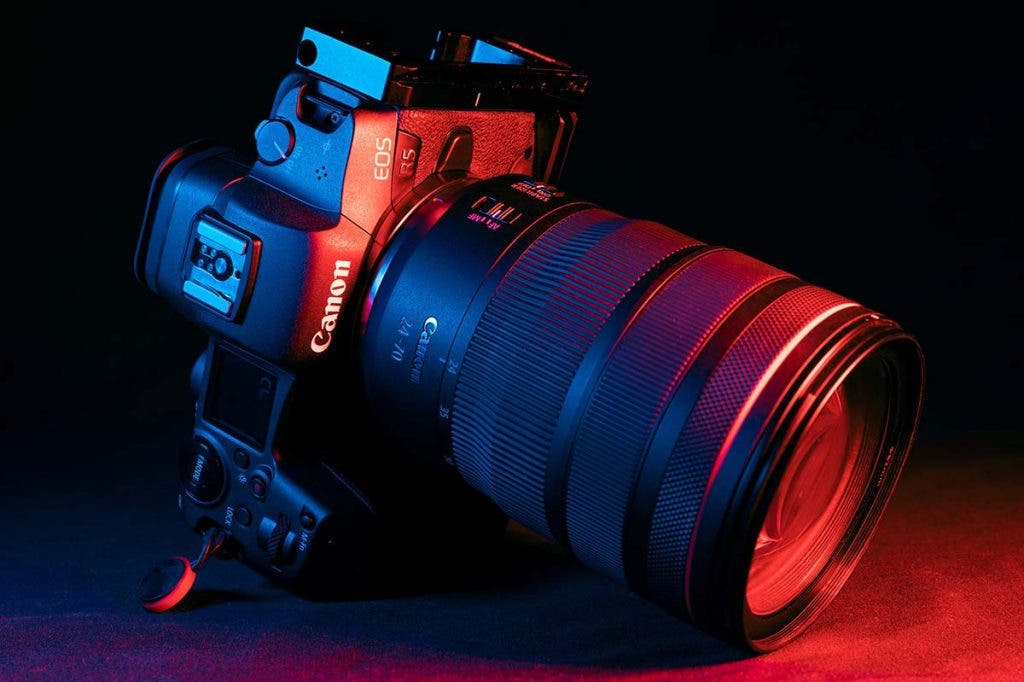
How Does a Mirrorless Camera Work?
Mirrorless cameras offer a functional upgrade to their predecessor, the DSLR camera. Instead of using a mirror to reflect and direct the view through your lens to the viewfinder, mirrorless cameras give you a real-time electronic preview of the image or video as you capture it.
Electronic Viewfinders vs Rear LCD Screens
Some mirrorless cameras show the composed frame in your choice of two places: through an electronic viewfinder or on the camera’s rear LCD screen. Other compact cameras only have a rear LCD screen, but you can add an optional viewfinder to your hot-shoe mount.
Electronic viewfinders deliver the traditional photographic experience and make it easier to focus on your shot or footage by blocking distractions and stray light. You can also review your shot without having to move the camera away from your eye.
LCD screens offer a larger display so you can more easily assess how sharp your focus is and whether you need to make any adjustments.
Shutter Volume
DSLRs need to flip the mirror up to shoot and they use a physical shutter, which means that taking a photograph can be a noisy proposition. Mirrorless cameras are virtually silent and draw less attention during spontaneous or candid moments.
Features to Consider in a Mirrorless Camera for Video
Mirrorless cameras incorporate a lot of technology and innovations. Their list of features may be as long as those of cars. As a result, choosing a mirrorless camera for recording videos is tough, especially if you don’t do your research first.
To begin, make a list of your requirements, including the budget and future plans. Then, check out the most important characteristics of a mirrorless camera and find out which ones help you record high-quality videos. Here are the main features you should consider to make things easier for you.
Sensor Size
The size of the sensor determines the quality of the video footage you will record. A full-frame mirrorless camera provides the largest sensor available in high-end prosumer cameras. APS-C and Micro Four Thirds sensors are smaller than a full-frame sensor. You can find sensors even smaller than these. The sensor size influences the camera’s performance in low light conditions, the level of noise, and the ISO sensitivities. As a general rule, you want the largest sensor you can afford.
Video Recording
If you will use the mirrorless camera mainly for video recording, check out video resolution (4K, 8K, full HD, etc.) and format, recording speed, recording duration, and image stabilization systems. You should also consider other features that improve the quality of your videos, such as waveform monitoring, focus peaking, frame markers, zebra patterns, and LUTs.
Don’t forget about inputs for external microphones, headphones, monitors, and other accessories. If the mirrorless camera has wireless functionality, you can control the camera using a tablet or smartphone and transfer the footage directly to an external storage device.
Lens System
Mirrorless cameras have interchangeable lenses, meaning you can use more than one lens with the same camera body. But not all mirrorless cameras are built the same. Some have Micro Four Thirds lens systems, others have EF lens systems, while others have proprietary lens systems such as Nikon Z Mirrorless and Fujifilm X Mirrorless. So, check out the range of lenses that work with the mirrorless camera you choose.
Electronic Viewfinder & LCD
Mirrorless cameras don’t have an optical viewfinder. Instead, you rely on the electronic viewfinder and the rear LCD screen. Especially for movie recording, you will rely on the rear LCD. Therefore, you want it to provide clarity and color accuracy. The rear LCD should be as large as possible and able to tilt in any direction for the most flexibility. Keep in mind that the electronic viewfinder works with the help of your camera’s battery, and its technical performances add to the overall recording experience.
Autofocus
Autofocus (AF) is essential for professional video recording. Your mirrorless camera should provide phase and contrast detection with as many points as possible and real-time object tracking. The latest camera models use AI for people, animal, and object detection, face and eye detection, and other smart functionalities for improving AF and helping you track objects throughout your video footage.
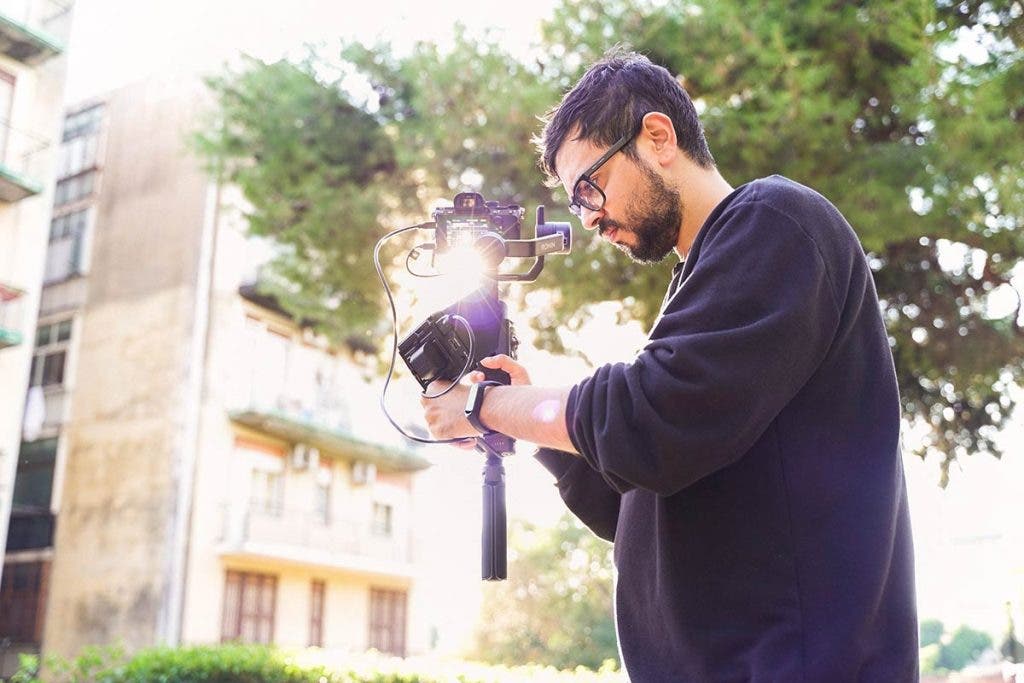
Why You Should Choose Mirrorless Cameras for Video Recording
A mirrorless camera may be a better choice for video recording when you are frequently on the move and want a lighter, robust camera. Most mirrorless cameras weigh under 1kg (2.2 lbs) and are resistant to dust, moisture, and cold. Mirrorless cameras are easier to hold and provide a better grip because they are often lighter than other cameras. Furthermore, they often have better image stabilization systems and are less prone to camera shake showing up in your footage.
Since newer camera models are almost all mirrorless, they also include newer technology that helps you record in high resolutions and RAW format for the best possible image quality.
Another advantage of mirrorless cameras is their improved tilting LCD screens that allow you to control the composition while filming. You can keep the camera in any position and still see the scene in real-time on the viewfinder.
Nowadays, mirrorless cameras offer the same image quality and versatility as any camera, with interchangeable lenses and adaptors to switch between different lens systems. They provide state-of-the-art autofocus and real-time tracking. Despite their size, mirrorless cameras are a solid candidate for video recording.
Feature photo by Vanilla Bear Films on Unsplash
